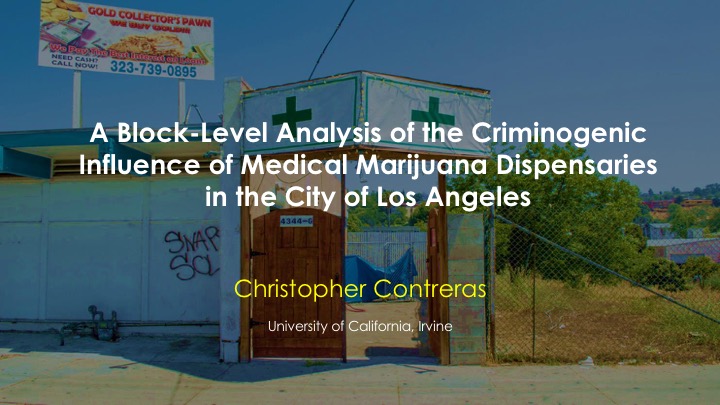On December 25, 2016, ILSSC graduate student Christopher Contreras had a journal article published in Justice Quarterly entitled, “A Block-Level Analysis of Medical Marijuana Dispensaries and Crime in the City of Los Angeles.” The article featured research Christopher Contreras conducted for his 2nd-year project in the department of Criminology, Law and Society.
Citation:
Contreras, C. (2016). A Block-Level Analysis of Medical Marijuana Dispensaries and Crime in the City of Los Angeles. Justice Quarterly, 1–27. http://doi.org/10.1080/07418825.2016.1270346
Abstract:
The liberalization of marijuana laws may have implications for neighborhood crime insofar as the distribution of marijuana through a dispensary system may provide additional opportunities for criminal behavior to take place. This project fills an important gap in the scant literature on medical marijuana dispensaries and neighborhood crime rates by integrating perspectives from environmental criminology and social organization theories in investigating the dispensary-crime nexus through interaction models and flexibly assessing dispensaries’ relationship to crime at different spatial scales. This study found the placement of a medical marijuana dispensary in the previous year to be associated with crime rate change, in both the block and the surrounding area, over and above predictor variables drawn from social organization theory. And, this study’s interaction models suggest that marijuana dispensaries may increase crime rates on socially organized blocks, with such blocks potentially experiencing a slight perturbation in their ecological continuity from a dispensary’s establishment.
